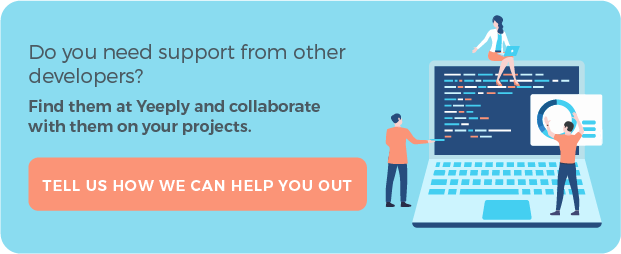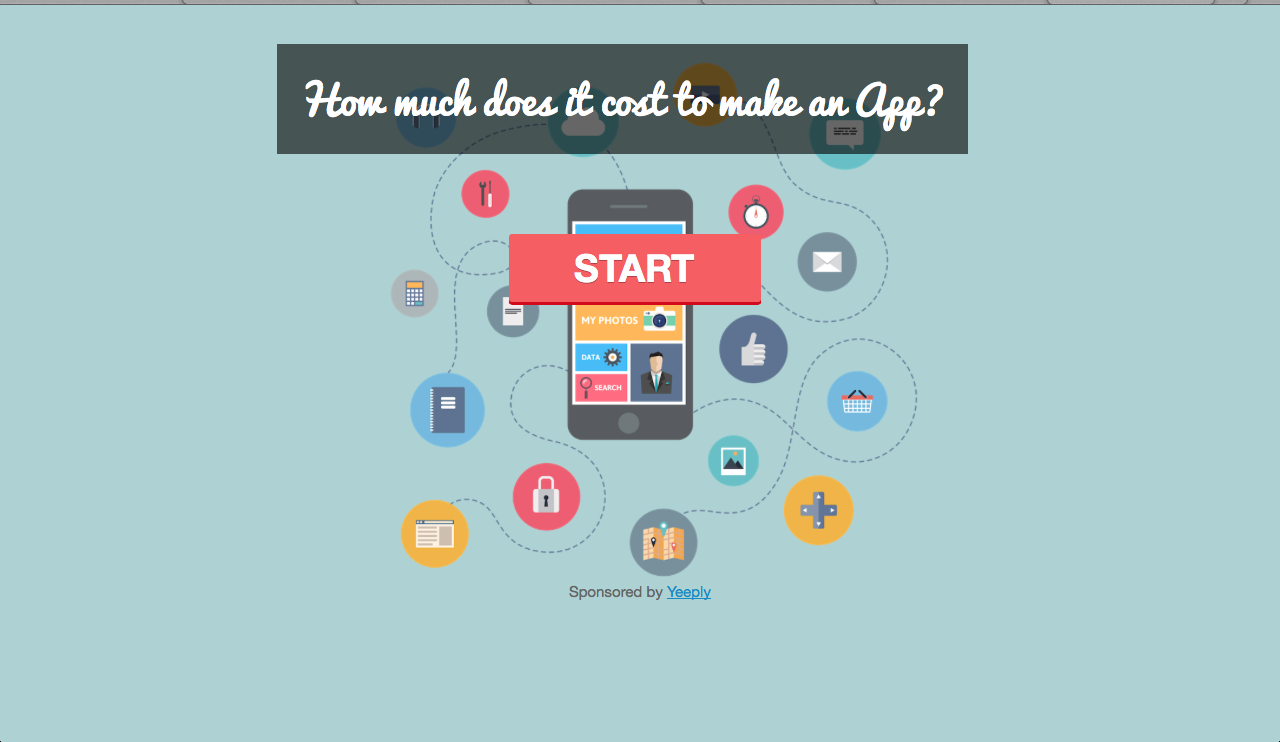Most startups begin their journey with a defined vision and objectives, but these are often modified to obtain the definitive version of their product or service.
The Lean Startup method basically consists of streamlining this search process.
How? Using a fast learning cycle to validate or refute initial business hypotheses through prototype launches and direct customer feedback.
At the moment, more than 50% of companies already use this method.
We tell you what it consists of, what its advantages are and some examples of its application in the field of technology and entrepreneurship.
Index
- What is the Lean Startup method and how can it help your startup to be successful?
- The 3 phases of the Lean Startup methodology
- What are the common challenges startups face when implementing the Lean Startup method?
- 3 successful examples of Lean Startup method
- Yeeply helps startups apply the Lean Startup method to their business idea
What is the Lean Startup method and how can it help your startup to be successful?
“Lean Startup” is an expression that can be translated as “adjusted start-up”.
From a functional point of view, this methodology allows companies to adopt a scientific approach to create, manage and validate your products, services and/or business models, guaranteeing their viability in terms of costs, resources and time.
Regarding its application, the Lean Startup approach is based on the experimentation and in the iterative development (especially in the case of software and other technological products), to obtain early feedback from users.
In fact, in the end it is the consumers who determine the type of products they want to see on the market, and not the other way around.
Although the concept seems relatively recent (it was proposed in 2008 by business expert Eric Ries), the Lean Startup philosophy derives from an operating model developed by Toyota in the 1930s (“The Toyota Way”) and which allowed its workers to introduce process improvements and upgrades to increase manufacturing speed and product quality.
? It might interest you | Cybersecurity For Startups (A Step-By-Step Guide)
The 5 main advantages of the Lean Startup method
The Lean Startup method can be a great help in running your startup and knowing when to grow your business.
Its advantages are:
- You will be closer to your customers
As a startup, you have the natural advantage of having direct access to your customer feedback and implementing changes quickly and efficiently.
This is something that most large companies can no longer do (at least not immediately).
- You will reduce uncertainty
Poor planning can cause a start-up to fail.
Using the Lean Startup method, you will be able to create an ecosystem with the necessary tools for your business to be consistent and sustainable in the long term.
- You will take advantage of the “small opportunities”
Companies tend to look for big market opportunities, but sometimes they don’t focus on smaller or special needs markets.
Using this methodology, you can identify markets/demographics, apparently smaller, but with an upward trajectory and great growth potential.
? Related article | Custom Software Development: When and Why Does Your Company Need It?
- You will innovate faster
As a start-up, you are not subject to too many logistical or business hierarchy constraints, and you can innovate both ways.
The more innovative and disruptive your company/solution is, the more difficult it will be for your competition to copy or compete with what you are doing.
- You will prioritise quality
With the help of the Lean Startup method, the progress of your business will validate itself.
Your company will be prepared for changes and growth, and will have a practical approach, based on scalability.

The 3 phases of the Lean Startup methodology
The Lean Startup philosophy is the consequence of a cycle of three phases: Build – Measure – Learn.
Build
It consists of creating the smallest version of your business model (Minimum Viable Product or PMV) but with enough features or functionality to keep customers satisfied while market research is being conducted.
This prototype, made with the lean CANVAS business model, is the one that is launched to the public as a “test”.
Measure
In this second phase, you must define your KPIs or performance indicators to assess your conversion rate and the success of your MVP.
An advice? Brand clear objectives for a certain period of time and evaluate your performance based on them.
Learn
Draw conclusions, value the positive things and study what changes you should make.
It is essential that you understand that the Lean Startup is a continuous learning cycle, so every trial and error process that allows you to grow is important.
In fact, the philosophy of the Lean startup method is “fail fast, learn fast”.
And why is it so important to fail fast?
This is where a well-known term in the ecosystem comes into play. Have you ever heard of startup “pivot”?
The meaning of pivot is as follows: “change direction without losing momentum” (for example, the personal drive, knowledge and recognition gained so far). This is especially important for startups, which need to make the most of their resources to gain/maintain a competitive advantage, and find the product market fit.
So how to pivot in startups? Lean pivot in startup can be a major change, such as entering a new market, or a minor one, such as a change in pricing strategy.
? Keep reading | The 24 Most Innovative Tech Startups
What are the common challenges startups face when implementing the Lean Startup method?
The Lean Startup approach is a scientific method, which adapts to customer needs in a changing world.
It arises as a response to the most common failures of newly created companies, a type of business that, due to its characteristics and nature, are more exposed to risks.
However, the Lean Startup also has limitations.
One of them is the erosion of trust: too much customer feedback can cause you to change your idea so often that you end up missing your original goals.
There is also a risk of “fatigue”. Because if you feel that your time, attention and resources are diverted from other projects, you may be tempted to give up at some point.
On the other hand, good ideas don’t always work. The timing to launch them is essential.
Also, you may have to make several MVPs before reaching the point where customers are satisfied.
In this sense, it should be remembered that the importance of the Lean Startup method is to avoid losses before committing to an idea or product, although always in a sustainable way.
3 Successful Examples of Lean Startup method
Many companies have implemented the Lean Startup methodology, some of them with great success. Do you know them?
Dropbox
Dropbox is one of the most popular file sharing services.
It started as an MVP from a video stream of 3 minutes.
The objective was for users to learn how to use the tool, on the one hand, and to assess the real demand for this type of service, on the other.
Buffer
This social media content management platform is an example of agile software development and rapid prototyping.
The startup launched a landing page indicating the plans and prices of the tool. In this way, they determined which users would pay for it.
Currently, Buffer is one of the most successful applications tested with the Lean Startup method.
General Electric
This company has implemented the Lean Startup to test prototypes of new products.
In his case, the key is iterative and incremental development: the value data shared by customers is the starting point for adapting the product to the market (product market fit).
✏️ It might interest you | The Advantages for Companies Outsourcing IT Support
Yeeply helps startups apply the Lean Startup method to their business idea
In Yeeply we have helped many companies and startups to develop their digital projects by adopting the Lean Startup method.
Our methodology is simple: share with us your idea and our Design Thinking experts, developers and designers specialised in startups, they will accompany you throughout the process, from the validation phase of the idea through a mockup until the launch of your first prototype.













